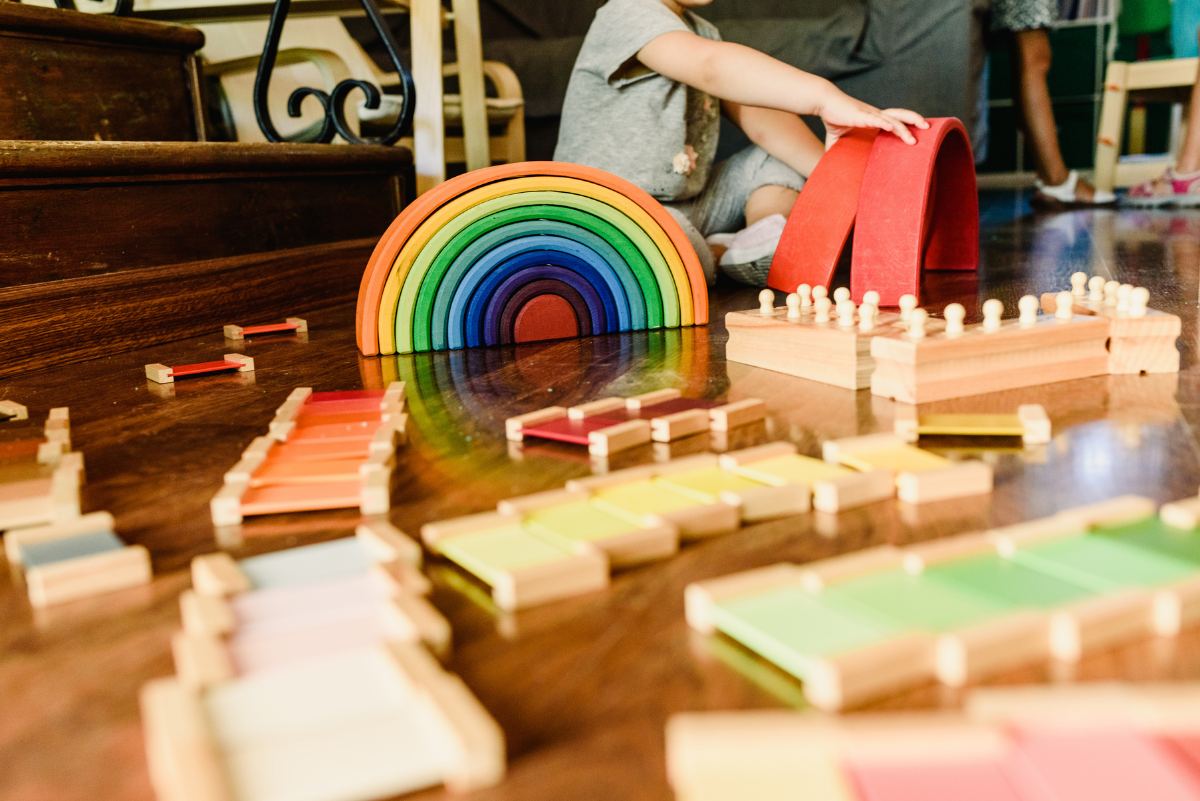
Whether you’re homeschooling your children or simply trying to improve their educational opportunities, there are many good reasons to include the Montessori method in your at-home routine. Dr. Montessori created an educational philosophy; once you understand its tenants, it’s easy to start practicing the Montessori method at any point in your child’s life.
Step One: Curate the Environment
Dr. Montessori believed that a student’s environment can have a major contribution to their educational success or failure. Chaotic, messy, and noisy environments are difficult to learn in, while simple and comforting environments allow a student to focus on their coursework. This is why Montessori classrooms are always kept clean, decorated simply, and maintained regularly by the teachers.
Another major feature of a Montessori classroom is that the furniture is the right size for the students. Large furniture and little hands do not go together; this is why Dr. Montessori commissioned kid-sized chairs, tables, and desks from local furniture makers. Montessori environments also contain smaller tools and auxiliary items like brooms, dishes, and notebooks. Shelves should be placed lower, drawers should be smaller and less heavy, and step stools should be provided for sinks and other features that cannot be moved.
In general, if a kid is expected to use the item for work, it should be of appropriate size. As your kids get older, replace small items and furniture pieces with ones that are larger so that the environment continues to be easy to work in.
Step Two: Choose Learning Materials
One of the primary features of a Montessori education is free access to engaging and interesting learning materials. Dr. Montessori spent much of her time developing toys, activities, and learning kits that would help teach students about various aspects of the world.
The appropriate Montessori learning materials for your child will vary based on their age. Young children need tactile objects that teach them about shapes, textures, and general physics. As they get older, kids should be introduced to abstract concepts like math and language through physical materials that they can make sense of. Even older children will thrive off of science experiments, modeling kits, and books about their favorite subjects.
Step Three: Allow Free Interaction
In a Montessori classroom, students are not assigned activities to practice. Instead, a wide variety of age-appropriate learning materials are provided. Then, students are given work periods where they are allowed to choose their favorite activities and engage with them until they are done. Freedom of choice and self-confidence are some of the core values that are taught through this action.
If you are homeschooling your kids, schedule a one- to two-hour work cycle in the late morning. Later in the day, you can engage in online coursework appropriate to your child’s grade level. If your kids attend a regular school and you want to supplement their education with Montessori-style learning, only request that they try one to three work cycles a week. During this time, allow your child to be completely absorbed in their work. Always be available to provide adult assistance if necessary.
Step Four: Maintain Regular Growth
No matter at what age you start incorporating the Montessori method, it’s important to recognize that your child needs a steady flow of new materials and new information. Your kid should always have a new activity available for their work cycles, and they should usually have enough activities to make their own choice of how to spend their time. Older children may have dedicated projects, but younger children will quickly grow bored if their selection is too small. For this reason, it’s usually smart to share materials with other Montessori parents or work with a school directly.
Keep an eye on the success of your child’s projects. Reward them for small milestones, and do not let them get caught up on minor defeats. Check in regularly, pay attention to your child’s unique interests, and make sure that they regularly grow toward the skill set that makes them smile.
Practicing the Montessori method at home is all about maintaining a clean and tidy environment where your child has the tools and materials that they need to succeed. Whether it’s a nice space to complete homework or an entire in-house classroom, make sure that your child feels like their education and work are an important part of your household dynamic.





















